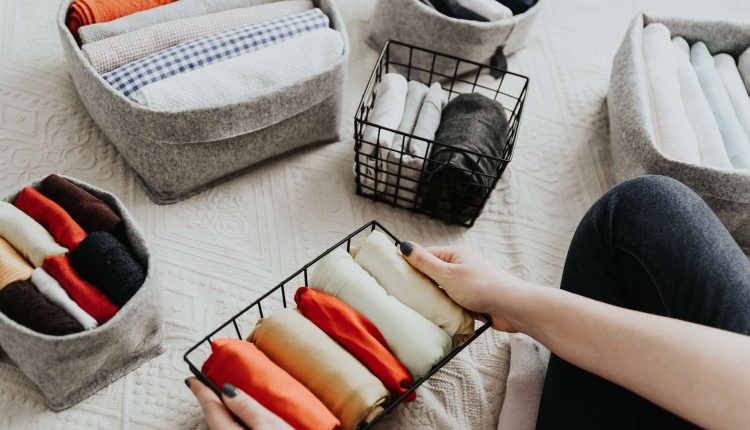A Quick Guide to Decluttering Your Home
Start by asking the right questions, then don’t stop till the job is done.
Living in a cluttered home is not fun. It means you’ll spend an inordinate amount of time looking for things when you need them – and quite possibly never finding them. It means you’ll waste hours cleaning and rearranging to keep your home looking more or less inviting. It means you’ll carry the mental burden of having too much stuff and not being able to relax fully when you’re at home.
Fear not! There is a cure, and it’s called decluttering. This process, difficult though it may be at times, can change your life. It will transform your living space into one that you want to be in and it can miraculously add hours to your life – hours that you can spend on pursuits more pleasant than looking for things you can’t find.
There are many decluttering experts with excellent advice to share (most famously, Marie Kondo and her KonMari Method), but here we will distill what we consider to be the most useful information for starting your own decluttering journey.
Ask Yourself Questions
Marie Kondo thinks people should ask if an item “sparks joy.” Gretchen Rubin suggests asking if an item “energizes” you. Joshua Becker tells people to hold each item in their hand and ask, “Do I need this?”
The Unclutterer says there are three questions to ask: (1) If you had to purchase an item at full price, would you? (2) If someone you didn’t like gave you the item as a gift, would you keep it? (3) Does it invoke happy memories?
Nineteenth-century British designer William Morris simplified it further: “Have nothing in your house that you do not know to be useful, or believe to be beautiful.”
Choose the question(s) or approach that works best for you. The point is to begin analyzing the items in your home with a critical eye and questioning their reason for being there.
Pull Everything Out
Both Marie Kondo and Francine Jay, author of “The Joy of Less,” insist on the importance of removing everything from its usual place in order to better assess its current relevance to your life and home. As Jay explained, we become accustomed to seeing things in certain places:
The same goes for clothes, which Kondo tells people to put in a big pile in the middle of the room. Leave nothing untouched in a drawer or closet. You need to be able to see everything to know what you’re dealing with.
Establish a Sorting Method
There are as many sorting methods out there as there are socks in your sock drawer, but here are some that we consider to be effective. Jay recommends dividing belongings into trash, treasure, or transfer (give away/donate/discard), and to use black garbage bags that don’t allow you to second-guess your decision. Whatever remains is divided into three further categories: Inner Circle, Outer Circle, and Deep Storage, based on frequency of use.
Professional organizer Dorothy Breininger uses a 5-point “clutter scale” to gauge whether or not an item belongs in the home: 5 – non-negotiable items that must be there, 4 – items that are difficult to replace or that you use daily, 3 – items used occasionally but not within last six months, 2 – items rarely used but you’re hesitant to discard, 1 – items never used, seasonal, specialized tools, etc. Breininger observes that “there are surprisingly few items that fall into the 2 and 3 categories; and as soon as something is labeled thus, it becomes easier to purge.”
Joshua Becker, author of the “The Minimalist Home,” says you should start with easier spaces and finish decluttering each one completely before moving on to the next. In a typical house, the order should be living room, bedrooms, closets, bathrooms, kitchen and dining areas, home office, storage areas, and garage/yard. Don’t stop until you finish the entire house.
Don’t Furnish a Fantasy Identity
This is one of Gretchen Rubin’s suggestions, from her book “Outer Order, Inner Calm.” The idea is not to keep stuff that doesn’t apply to your life right now – clothes you’ve never worn, books you aspire to read but never touch, gear for sports you hope to take up someday, an instrument you’ll probably never learn to play.
Too often we hold on to things that represent who we think we should be, rather than who we actually are. These create clutter in the home, while also making us feel like failures for not achieving what we think we should. Let go of it in order to create time and space for your true interests.
Enlist Your Family’s Help
Unless you live alone, decluttering cannot be a solo activity. It’s important to sit down with your spouse, children, or other family members to discuss what you want to do and how they can help. Explain the benefits of decluttering and how it will free up time and resources for other fun family activities. Older children should take responsibility for decluttering their own spaces.
Discard Items Responsibly
Determine what can be given away to friends (host a clothing swap), donated to charity, set on the curb for free taking, or resold through online marketplaces or a yard sale. Always clean items prior to selling, and try to repair them if possible. Seek out recycling facilities whenever possible. Landfill should be a last resort.
Establish New Rules
Certain habits got you into the mess of having an overly cluttered home and they will take you right back there unless you’re vigilant. It’s important to take the decluttering process slowly and with full awareness. Summer Edwards of sustainable fashion blog Tortoise & Lady Grey writes,
One excellent rule is “one in, one out.” While it’s a human tendency to stockpile extras in case you need them, it leads to clutter and disorganization. A better approach is to keep one of each thing you need – one set of bed linens, one belt, one coat, one spatula, one bathing suit, one pair of sandals. You’ll always know where it is because there’s less stuff in the house obscuring its location and, as Becker says, “There is a peaceful joy found in the presence of owning one.”
Decluttering is a slow and ongoing process. Don’t get discouraged, but keep plugging away until the job is done. Use this time to acknowledge how much you possess, how little you truly need, and how important it is to fight back against a culture that constantly tells us that we need more, more, more. More often than not, less is the right answer.

